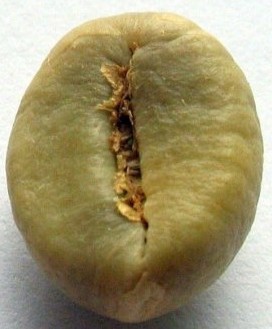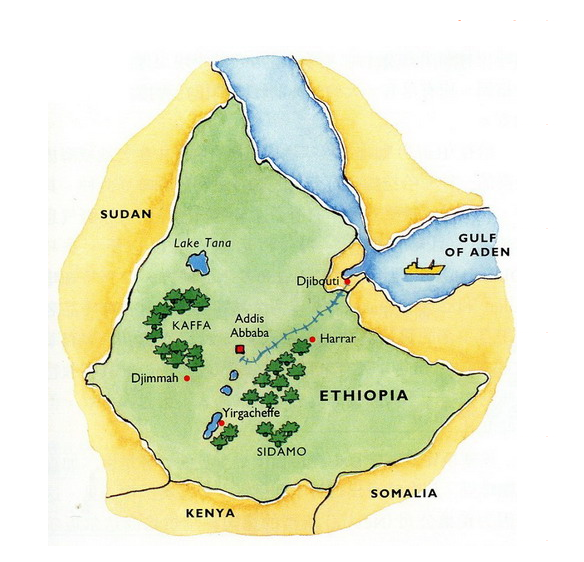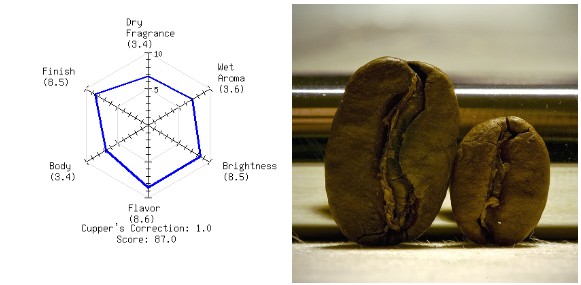African Coffee Manor Robusta Coffee beans: Uganda Coffee Raw Bean Uganda BugisuAA

CONTENT
The coffee growing industry in Uganda is one of the pillar industries of its exports. Uganda is the birthplace of Robsta in Africa, just as Ethiopia is the origin of Arabica coffee, while Robster coffee was first discovered in Uganda.
So far, Uganda has a history of growing coffee for more than 100 years. The output ranks second in Africa, after Ethiopia.
At the same time, Uganda is one of the few major countries in Africa dedicated to the production of organic coffee. In Uganda (Uganda), Arabica coffee beans account for only 15% of the country's total coffee production, and Uganda's best coffee is mainly produced in the mountains of Elgon and Bugisu along the Kenyan border in the north-east and Ruwensori in the west.
The cultivation of coffee in Uganda is all small-scale family operation. The livelihood of 25% of the population is closely related to coffee production. About 500000 farms grow coffee, but mainly Robster. Robster accounts for 90% of coffee production, and the remaining 1 is Arabica coffee. Arabica and Live Buster are harvested from October to February of the following year.
The main sales areas and quality grades of Ugandan coffee are:
Bugisu Bugisu AA (accounting for only 4% of the country's total production), Bugisu Bugisu A, Vago Wugar A (all of the above belong to water washing treatment), and a small amount of sun bean bead Drugar. Bugisu Bugisu AA. Among them, AA represents the grade of coffee and represents the highest grade in the country. Bugisu Bugisu grows on the slopes of Mount Elgon in eastern Uganda. The palate is thick and low in acidity, with a unique taste of raw papaya, which is very different from other East African coffee, closer to Java coffee in Indonesia.
Uganda leads Africa in coffee production, accounting for more than 70% of its total exports. In the 1960s, Ugandan coffee production remained at 3.5 million bags a year. By the mid-1980s, coffee production had dropped to 2.5 million bags a year, mainly for political reasons. But now coffee production is on the rise again, currently about 3 million bags a year. It is mainly exported to the European Union, with Germany, Italy and other countries as the largest coffee buyers.
Mbale on the eastern side of the Elgang Mountains and other producing areas on the western side near the border of the Democratic Republic of the Congo have the export name Wugar. The official ranks are Oaganic (Organic), BugisuAA, BugisuA, BugisuB, Bugisu PB, Wugar, Drugar and other unlisted grades. To find Ugandan coffee with good performance, you must first recognize the three grades of BugisuAA, An and PB, but because the country is located in the interior and has many transportation problems, it often comes to raw beans with low moisture content and not emerald green appearance. However, Ugandan coffee is not a type of coffee that emphasizes aroma, as long as the raw beans are not and turn 100 or yellowed, they can generally have the correct flavor performance in the producing areas. It has a low ripe fruit aroma, such as the taste of red wine, and a thick mellow thickness, which is similar to some Kenyan beans with low tone, but with a mild soil flavor, so it is quite different from other East African countries in flavor characteristics. on the contrary, it is somewhat similar to Asian Indonesian Sulawesi Tonaga coffee and Java state-owned manor coffee. The baking degree between City+ and Full City+ is all better.
Source: Devi Coffee
Important Notice :
前街咖啡 FrontStreet Coffee has moved to new addredd:
FrontStreet Coffee Address: 315,Donghua East Road,GuangZhou
Tel:020 38364473
- Prev

African Coffee Manor Ethiopian Yirgacheffe Coffee Green Bean Yirgacheffe G 2 Wash
Chinese Name: Ethiopia Yirgacheffe Green Bean English Name: Ethiopia Yirgacheffe G.2 Commodity Specification: 1000g Coffee Country: Ethiopia Growing Elevation: Above 1, 600m Coffee Grade: Grade 2 Processing Method: Washing Roasting Degree: Medium (city Roast+)/Depth Why is it called Yirgacheffe? A lot of friends are asking us, from above
- Next

American Coffee Manor in Nicaragua Giant Coffee Raw beans Nicaragua SHB Elephant beans
CONTENT Chinese name: Nicaragua English name: Nicaragua Cup Test score: 88.17Commodity Specification: 1000g Origin: Nicaragua Madriz harvest year: 2012 10ram 11 altitude: 1400 m above sea level: Marago Rippi Maragogype treatment: natural drying after washing Washed and Sun drying grade: SHB taste: crisp, clean and delicate
Related
- Does Rose Summer choose Blue, Green or Red? Detailed explanation of Rose Summer Coffee plots and Classification in Panamanian Jade Manor
- What is the difference between the origin, producing area, processing plant, cooperative and manor of coffee beans?
- How fine does the espresso powder fit? how to grind the espresso?
- Sca coffee roasting degree color card coffee roasting degree 8 roasting color values what do you mean?
- The practice of lattes: how to make lattes at home
- Introduction to Indonesian Fine Coffee beans-- Java Coffee producing area of Indonesian Arabica Coffee
- How much will the flavor of light and medium roasted rose summer be expressed? What baking level is rose summer suitable for?
- Introduction to the characteristics of washing, sun-drying or wet-planing coffee commonly used in Mantenin, Indonesia
- Price characteristics of Arabica Coffee Bean Starbucks introduction to Manning Coffee Bean Taste producing area Variety Manor
- What is the authentic Yega flavor? What are the flavor characteristics of the really excellent Yejasuffi coffee beans?

